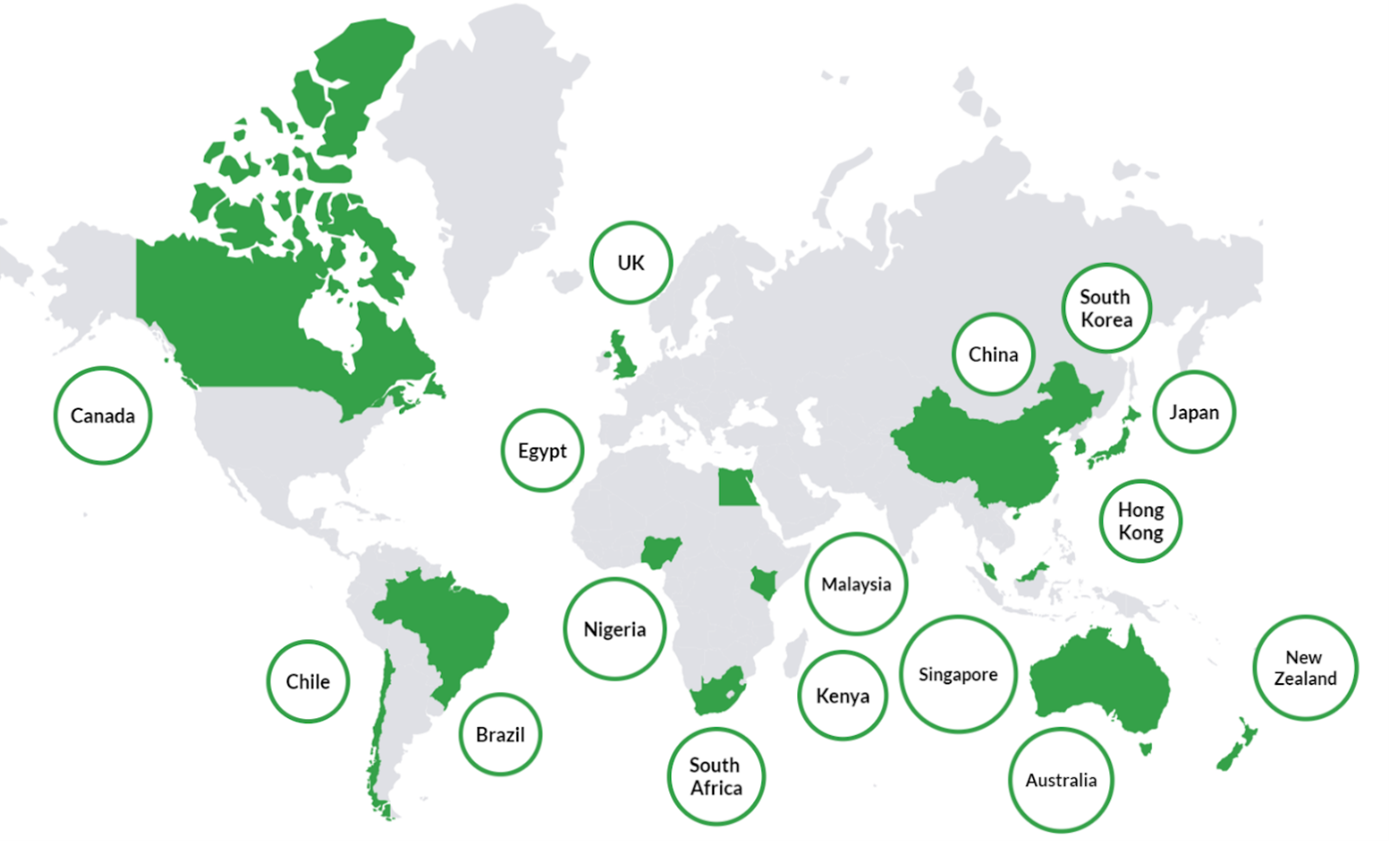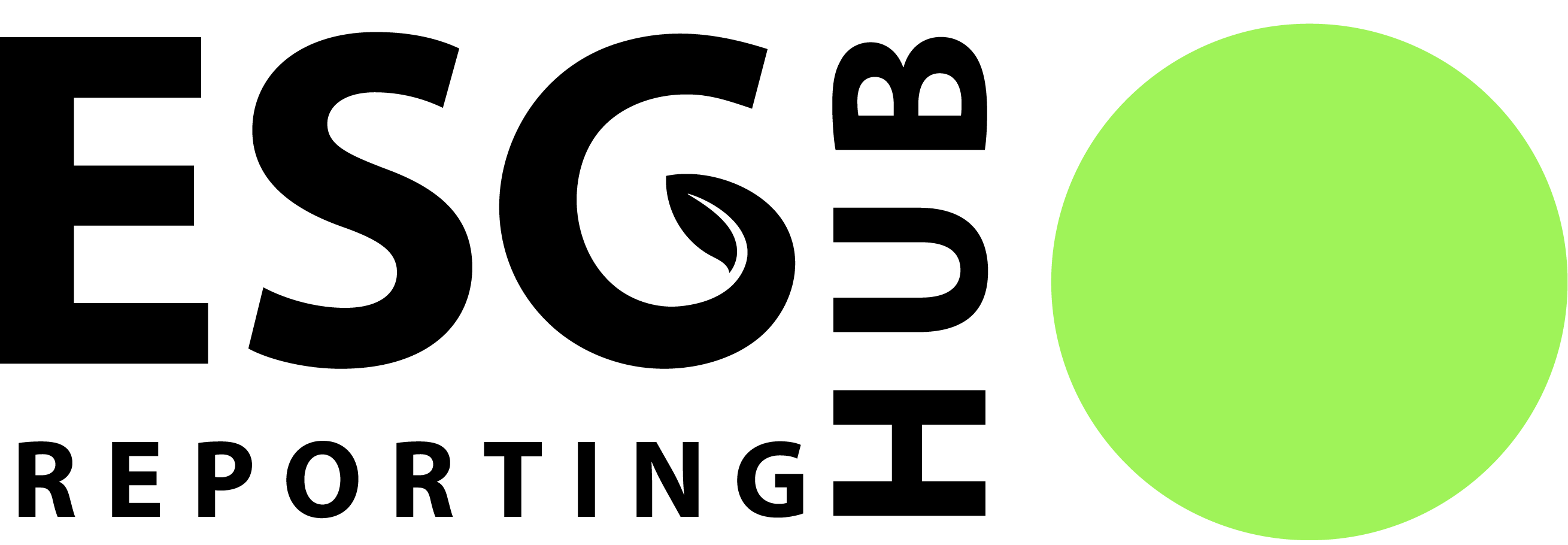IFRS S1 and S2 General Overview
This article provides a high-level overview of the new IFRS S1 and S2 Standards. These Standards require organizations to disclose information about all material sustainability-related and climate-related risks and opportunities that are likely to impact the entity's cash flows, ability to secure financing, or cost of capital.

Overview
On June 26, 2023, the International Sustainability Standards Board (ISSB) issued its first two standards, IFRS S1 and IFRS S2. The IFRS Sustainability Disclosure Standards serve as a worldwide foundation for sustainability disclosures. These Standards require organizations to disclose information about all material sustainability-related and climate-related risks and opportunities that are likely to impact the entity's cash flows, ability to secure financing, or cost of capital.[1] The following discussion provides an overview of the requirements in these Standards
IFRS S1: Sustainability-related Financial Disclosures
IFRS S1 mandates company disclosure of material sustainability‑related risks and opportunities (SRROs). Materiality in the context of sustainability-related disclosures refers to the omission, misstatement, or obfuscation of information that could reasonably be expected to influence financial statement users’ decisions. SRROs refer to factors and circumstances that have the potential to impact an organization's environmental, social, and governance (ESG) performance.[2] Read more about SRROs and how to identify them here.
Sustainability-related disclosures should cover the entity's governance processes, strategy, and risk management practices. Additionally, these disclosures should include metrics and targets used to monitor, manage, and report performance in relation to the identified SRROs.[3] Each of these four aspects must be addressed as follows:
IFRS S1 outlines the objectives for each of these four aspects, along with the disclosure requirements necessary to attain these objectives.
IFRS S1 explains that a company should report these sustainability-related disclosures alongside its financial disclosures. Additionally, the company must explicitly specify the financial statements to which these sustainability-related disclosures are linked. The numbers and assumptions in these sustainability-related disclosures should match as closely as possible with the numbers and assumptions in the financial statements. This means companies should follow the same accounting standards and principles in these disclosures. The company also needs to mention any decisions it makes and its sources when preparing the disclosures.
IFRS S2: Climate-related Disclosures
IFRS S2 requires company disclosure of material climate-related risks and opportunities. IFRS S2 also integrates the recommendations of the Task Force on Climate-related Financial Disclosures (TCFD). The TCFD splits climate-related risks into two categories:
Climate-related opportunities are actions that help society address global warming and benefit companies financially. Specific opportunities vary by market and sector; however, the TCFD identified the following as opportunities:
- Source efficiency initiatives.
- Transitioning to low-emission energy sources.
- Developing and promoting climate-friendly products and services.[4]
Industry-specific guidance is provided to assist in identifying, measuring, and disclosing information relevant to various business models and activities. Entities must consider the applicability of this industry-based guidance but are not obligated to use the specific metrics it contains. It should also be noted that measurement of greenhouse gas emissions under the climate standard must be determined with reference to the GHG Protocol Corporate Standard.[5]
The required climate-related disclosures are also organized to address the entity's governance processes, strategy, and risk management practices. Additionally, these disclosures should include metrics and targets used to monitor, manage, and report performance in relation to the identified risks and opportunities. Each of these four aspects must be addressed as follows:
Timeline
IFRS S1 and S2 are effective for annual reporting periods beginning on or after January 1, 2024 with earlier application permitted as long as both standards are applied. Thus, investors will generally begin to see information in 2025 for the 2024 reporting cycle (IFRS S1.E1, S2.C1).
In general, companies are expected to disclose sustainability-related financial information simultaneously with their financial statements. This approach aims to foster integration and ensure that the information is valuable for investors. Additionally, IFRS S1 and S2 are designed to be generally implemented at the same time. The standards can, however, be used in a proportionate manner. This enables companies to start with a less complicated approach and then improve the way they use the Standards over time—becoming more comprehensive in the information they collect, for example.
It is important to note that although IFRS S1 and S2 are available for use now and in the 2024 reporting period, the timeline could vary for companies electing to wait for jurisdictional requirements. Different decisions will be made from a jurisdictional perspective in terms of the mandatory date of application of IFRS S1 and S2 around the world. That is a conversation that will unfold over time.
Companies may also elect to adopt the standards early. In this case, the entity is required to:
Transition Relief
To address practical challenges faced by companies, the ISSB offers transitional relief for the first year of IFRS S1 and S2 implementation. Reliefs are only applicable in the first year of implementation and include the following:
1. Climate-first relief
In their initial reporting year, companies are given the flexibility to report only on climate-related risks and opportunities, effectively adopting a "climate-first" approach. For companies opting for this relief, it grants an additional year to report on SRROs. This extension also allows an extra year for the presentation of comparative data in the disclosures. Companies choosing this path must openly disclose their decision to do so.
2. Exemption from disclosing Scope 3 emissions
Scope 3 emissions are a category of greenhouse gas emissions that are associated with a company's activities but occur from sources not owned or controlled by the company. While companies are generally obligated to present Scope 3 emissions disclosures within their climate-related risk and opportunities disclosures, entities have the option to delay their reporting for an additional year.[6]
3. Exemption from presenting comparative information
IFRS S1 allows an extra year before requiring related comparative information. For instance, in the first reporting year, no comparisons are needed. In the second reporting year, a company using the climate-first relief and exemption from Scope 3 greenhouse gas emissions disclosure would provide comparisons for climate-related disclosures (excluding Scope 3 emissions) but not for broader SSRO disclosures.[7]
4. Exemption from using the GHG Protocol methodology
IFRS S1 and S2 require that companies employ the Greenhouse Gas Protocol Corporate Standard to measure Scope 1, Scope 2, and Scope 3 GHG emissions. However, companies previously utilizing a different method to measure greenhouse gas emissions are exempt from this requirement during the first year of implementing the standard. Therefore, in the inaugural year of implementation, companies have the option to use an alternative methodology for reporting.
5. Exemption from reporting concurrently with the financial statements
While companies are generally obligated to present sustainability-related disclosures concurrently with financial disclosures, during the first annual reporting period of implementing IFRS S1 and S2, entities have the option to delay their sustainability-related financial disclosures until after they have issued their corresponding financial statements. It's important to note that this relief doesn't supersede local jurisdictional requirements. If a company opts for this relief, its first set of annual sustainability-related financial disclosure swill align with its subsequent interim financial reporting.[8]
Compliance
IFRS S1 and S2 are the first two standards issued by the ISSB. The IFRS established the ISSB as a counterpart to their accounting standards-setting board, the IASB. While the ISSB's role is to establish a universal foundation for sustainability-related financial reporting disclosures, it lacks the independent legal authority to mandate compliance. Whether these standards become mandatory for companies depends on the actions taken by relevant regulatory authorities and governments in various jurisdictions. Therefore, it's not an automatic assumption that companies adhering to IFRS Accounting Standards will be compelled or will opt to follow IFRS Sustainability Disclosure Standards.
Anticipated support for and adoption of the ISSB's sustainability standards are expected from regulatory authorities and stock exchanges in various countries and regions. The ISSB's initiatives received endorsement from the G7, G20, IOSCO, the Financial Stability Board, African Finance Ministers, as well as Finance Ministers and Central Bank Governors from over 40 jurisdictions. These endorsements support and encourage widespread adoption of the Standards and send a strong signal to jurisdictions that they can be confident in implementing the ISSB Standards into their frameworks.
An endorsement of the new IFRS standards by a jurisdiction does not always indicate the establishment of a finite adoption date. It does mean, however, that an entity may choose to adopt the standards early.[9]
The ISSB has pledged to work with jurisdictions and companies to support adoption. Its first step in fulfilling this undertaking is the creation of the Transition Implementation Group which supports companies that apply the Standards and launches capacity-building initiatives to support effective implementation.[10]
The map below shows the countries and jurisdictions that are considering implementation of the ISSB standards:

[6] https://kpmg.com/xx/en/home/insights/2023/04/issb-transition-relief.html
[7] https://kpmg.com/xx/en/home/insights/2022/11/issb-timing-reporting.html
[8] https://kpmg.com/xx/en/home/insights/2023/04/issb-transition-relief.html
[10] https://www.ifrs.org/news-and-events/news/2023/06/issb-issues-ifrs-s1-ifrs-s2/
Sources for Map:


